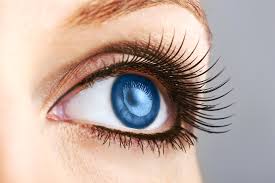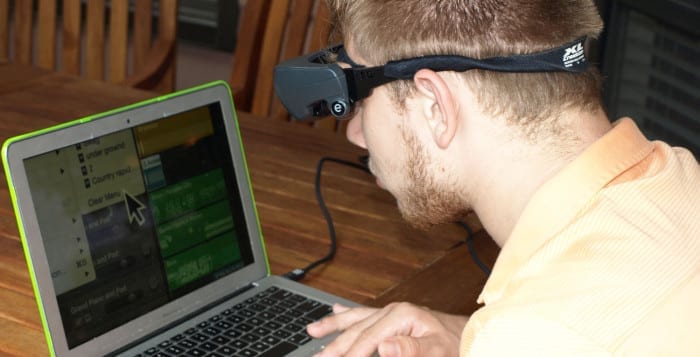By David Dunaief, M.D.
Cataracts are incredibly common; about 50 percent of Americans will have a cataract or have had cataract surgery by age 80 (1). Cataracts, the nuclear type, reduce visual acuity in an insidious process. Cataract surgery can resolve this, reducing the risk of falls and hip fracture. At the same time, it can reduce pressure in the eye.
Interestingly, research suggests that a diet rich in carotenoids may prevent the occurrence of cataracts. However, statins may have the reverse effect by increasing risk.
Let’s look at the evidence.
Cataract surgery and hip fracture
In one study, elderly cataract patients who underwent surgery were significantly less likely to experience a hip fracture during a year of follow-up than those who did not have surgery (2). This was a retrospective (backward-looking) observational study, and its size was considerable, with over one million patients ages 65 and older. The results showed a 16 percent reduction in the risk of hip fractures overall. Those who were older, between ages 80 and 84, had the most to gain, with a 28 percent reduction in hip fracture risk.
The increased fall risk and subsequent hip fracture risk among those with cataracts result from decreases in visual acuity and depth perception and a reduction in visual field that accompany cataracts (3). Hip fractures have a tremendous impact on the ability of elderly patients to remain independent. Many of these patients do not regain their prior mobility. Thus, avoiding hip fractures is the best strategy.
Cataract surgery and intraocular pressure
Yet another benefit of cataract surgery is the potential reduction in intraocular pressure (IOP). Why is intraocular pressure (pressure within the eye) important? High IOP has been associated with an increased risk of glaucoma.
A comparative case series (looking at those with and without cataract surgery) utilizing data from the Ocular Hypertension Treatment Study showed that those cataract patients with ocular hypertension (higher than normal pressure in the eye) who underwent cataract surgery saw an immediate reduction in IOP (4). This effect lasted at least three years. The removal of the cataract lowered the IOP by 16.5 percent from 23.9 mm Hg to 19.8 mm Hg. This is close to the low end of glaucoma treatments’ pressure reduction goals, which are 20 to 40 percent. Therefore, cataract surgery may be synergistic with traditional glaucoma treatment.
Cataract surgery and macular degeneration risk
There has been conflicting information in recent years about whether cataract surgery increases the risk of age-related macular degeneration (AMD) progression. A 2009 study suggested that, rather than increasing AMD risk, cataract surgery may uncover underlying AMD pathology that is hidden because the cataract obfuscates the view of the retina (back of the eye) (5). The study’s strengths were the use color retinal photographs and fluorescein angiography (dye in blood vessels of eye), both very thorough approaches.
Cataract prevention with dietary carotenoids
Diet may play a significant role in prevention of cataracts. In the Women’s Health Initiative Observational Study, carotenoids, specifically lutein and zeaxanthin, seem to decrease cataract risk by 23 percent in women with high blood levels of carotenoids, compared to those with low blood levels (6). In fact, those in the highest quintile (the top 20 percent) had an even more dramatic 32 percent risk reduction when compared to those in the bottom quintile (the lowest 20 percent).
As the authors commented, it may not have been just lutein and zeaxanthin. There are more than 600 carotenoids, but these were the ones measured in the study. Some of the foods that are high in carotenoids include carrots, spinach, kale, apricots and mango, according to the USDA. Interestingly, half a cup of one of the first three on a daily basis will far exceed the recommended daily allowance. Thus, it takes a modest consistency in dietary carotenoids to see a reduction in risk.
Vitamin C effect
The impact of vitamin C on cataract risk may depend on the duration of daily consumption. In other words, 10 years seems to be the critical duration needed to see an effect. According to one study, those participants who took 500 mg of vitamin C supplements for 10 or more years saw a 77 percent reduction in risk (7). However, only very few women achieved this goal in the study, demonstrating how difficult it is to maintain supplementation for a 10-year period.
Those who took vitamin C for fewer than 10 years saw no effect in prevention of cataracts. In the well-designed Age-Related Eye Disease Study, a randomized controlled trial, the gold standard of studies, those who received 500 mg of vitamin C supplements along with other supplements did not show any cataract risk reduction, compared to those who did not receive these supplements (1). There were 4,629 patients involved in the cataract study with a duration of 6.3 years of daily supplement consumption. Therefore, I would not rush to take vitamin C as a cataract preventative.
Statin use
Statins have both positive and negative effects, and the effect on the eyes according to one sizable study is negative. In the Waterloo Eye Study with over 6,000 participants, those patients taking statins were at a 57 percent increased risk of cataracts (8). Diabetes patients saw an increased risk of cataracts as well. And in diabetes patients, statins seem to increase the rate at which cataracts occurred.
The authors surmise that this is because higher levels of cholesterol may be needed for the development of epithelial (outer layer) cells and transparency of the lens. This process may be blocked with the use of statins. Before considering discontinuing statins, it is important to weigh the risks with the benefits.
Thus, if you have diminished vision, it may be due to cataracts. It is important to consult an ophthalmologist for diagnosis and, perhaps, cataract surgery, which can reduce your risks of falls, hip fractures and intraocular pressure. For those who do not have cataracts, a diet rich in carotenoids may significantly reduce their risk of occurrence.
References:
(1) nei.nih.gov. (2) JAMA. 2012;308:493-501. (3) J Am Geriatr Soc. 2009 Oct;57(10):1825-1832. (4) Ophthalmology. 2012;119:1826-1831. (5) Arch Ophthalmol. 2009;127:1412-1419. (6) Arch Ophthalmol. 2008;126(3):354-364. (7) Am J Clin Nutr. 1997 Oct;66(4):911-916. (8) Optom Vis Sci 2012;89:1165-1171.
Dr. Dunaief is a speaker, author and local lifestyle medicine physician focusing on the integration of medicine, nutrition, fitness and stress management. For further information, visit www.medicalcompassmd.com or consult your personal physician.







